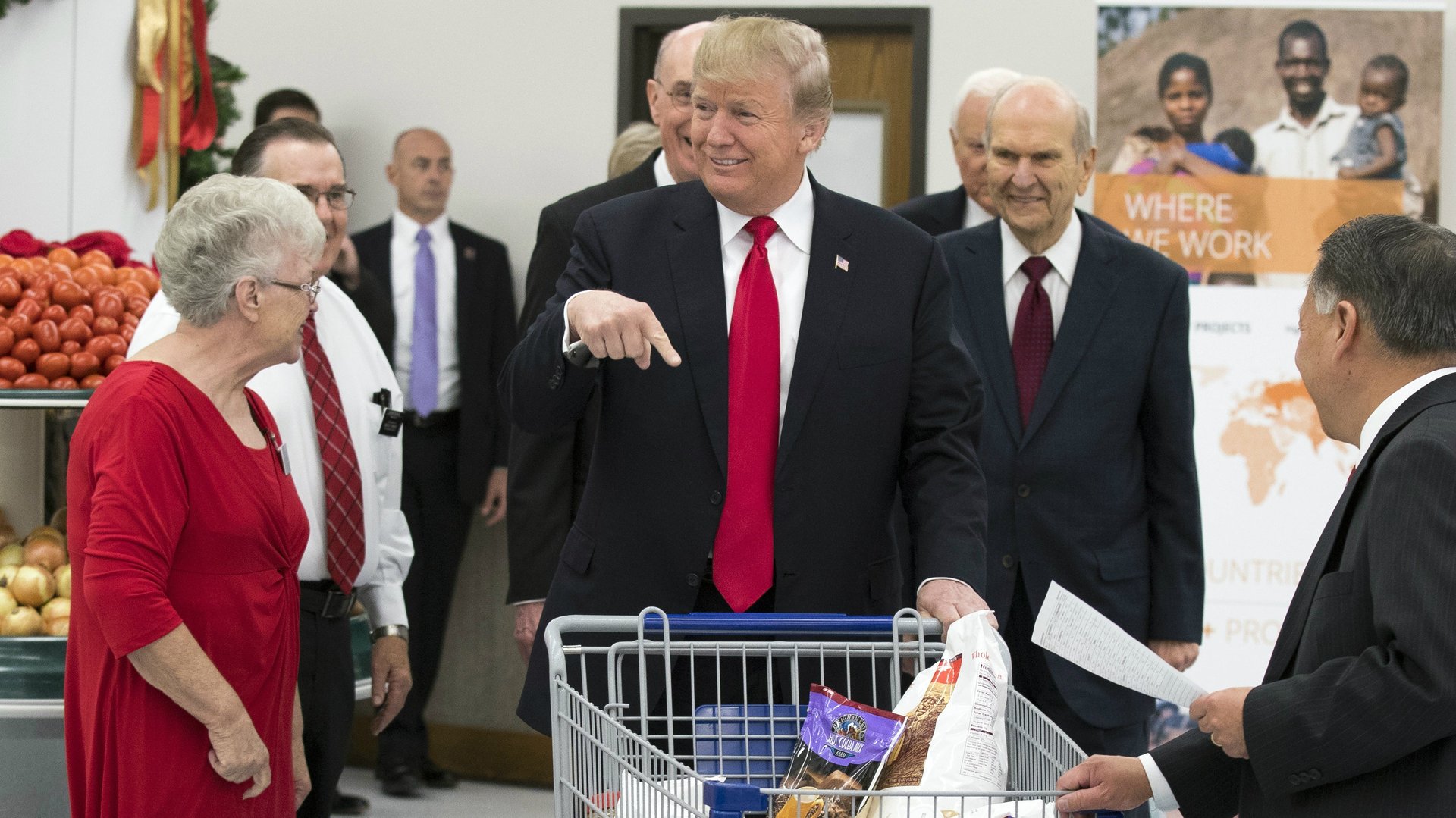Anti-immigrant rhetoric in the US has forced some families to choose between safety and food
New data reported by the nonprofit Children’s Health Watch show that across the last decade, immigrants participating in the US federal food stamps program—called SNAP—increased until shortly after president Donald Trump took office. According to the data, in 2018 there was a nearly 10% tumble in participation.


New data reported by the nonprofit Children’s Health Watch show that across the last decade, immigrants participating in the US federal food stamps program—called SNAP—increased until shortly after president Donald Trump took office. According to the data, in 2018 there was a nearly 10% tumble in participation.
The study, which was presented at the American Public Health Association’s annual meeting on Nov. 12, surveyed 35,000 mothers of young children in Boston, Massachusetts; Baltimore, Maryland; Minneapolis, Minnesota; Philadelphia, Pennsylvania; and Little Rock, Arkansas. The data came from interviews with those families that took place between 2007 through the first half of 2018.
Between 2007 and 2017, participation in the American food stamps program among eligible immigrant families whose mothers had been in the US for less than five years rose, peaking at 43% in 2017. But the trend appeared to reverse in the first half of 2018, when 34.8% of that same subset of families reporting participation.
“We believe the drop in participation may be related to more nuanced changes in national immigration rhetoric and increased federal action to deport and detain immigrants,” said lead researcher Allison Bovell-Ammon, deputy director of policy strategy at Children’s Health Watch, in a statement.
The eligibility rules for participation in SNAP did not change between 2017 and 2018. Bovell-Ammon went on to say that some families may be steering clear of the program because the paperwork involved with enrollment might jeopardize their immigration status. That could wind up being dangerous for some parents who would be forced to choose between being able to feed their families or going hungry in an attempt to stay safe.
The problem is particularly acute in light of the fact that the data also show that household food insecurity in the families surveyed rose between 2007 and 2017. In 2007, it was 9.9% and in 2017 it clocked in at 17.8%.
The findings aren’t the first time evidence has been presented of immigrant families shying away from food aid. In April, Harvest Public Media reported anecdotal stories that reflected a similar trend.